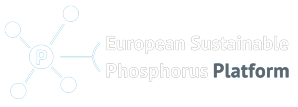Expert analysis by Alberto Persona (Fertecon - S&P Global) shows EU P supply risks and dependency on imports from Russia, need to find and invest in new supply sources, joint projects in phosphate rock mining countries, recycling. The seven page analysis, following a suggestion by ESPP, is published here and fills information gaps as to date analysis has mainly concentrated on nitrogen fertiliser and potash supply and the EU nitrogen fertiliser industry crisis (caused by natural gas prices). The analysis notes the complexity of the phosphorus supply and use chains, including phosphate rock, phosphoric acid, P4 and derivatives (used in renewable energy and strategic industry sectors), fertilisers, animal feed phosphates, industrial phosphate uses, as well as P in animal feed and food products, manure and other organic wastes. International supply of phosphate rock, the raw material of all phosphorus value chains, is highly concentrated with five countries accounting for close to 80% of international trade: Jordan, Syria, Peru, Egypt. For phosphate fertilisers, the situation is similar, with again 5 countries accounting for about 80% of international trade: Morocco, Russia, the United States, Saudi Arabia, and China. EU phosphate imports overall decreased hugely 2021 – 2023, with the supply disruption and price increases following Russia’s invasion of Ukraine. Today around 25% of fertilizer imports and 30% of phosphate rock imports still come from Russia. Possible answers to the EU’s current high dependency on a small number of supply countries, including significantly Russia include: direct European investment in phosphate rock production and processing in other countries and development of new supply sources such as possible new mine projects in Europe and phosphorus recycling.
“The EU’s phosphate conundrum” (7 pages), April 2025, Alberto Persona, Associate Director of Fertilizer Analytics, Fertecon - S&P Global Commodity Insights here https://www.phosphorusplatform.eu/downloads
